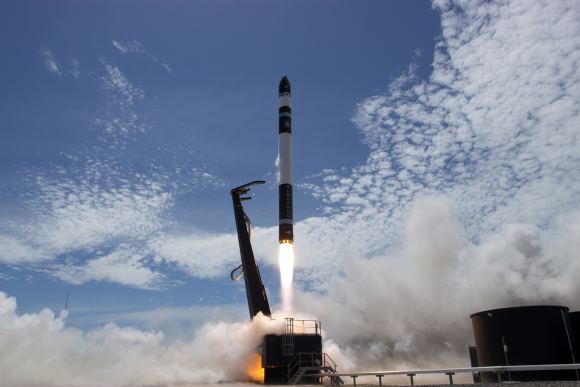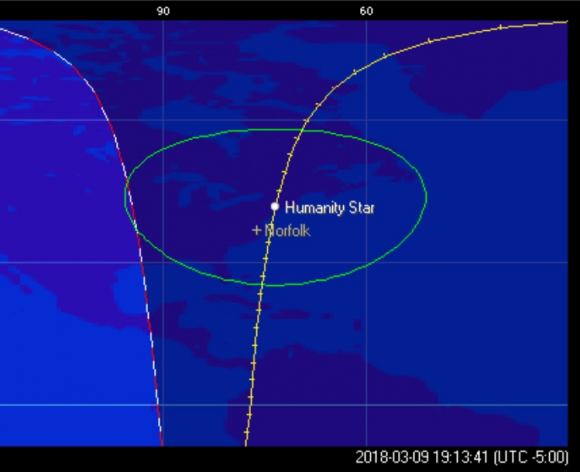
It’s a question I’ve gotten lots, now that the calendar has flipped over from February to March. When will we get our first good look at the Humanity Star reflector satellite?
The Humanity Star satellite was a surprise payload object placed on the January 21st, 2018 inaugural orbital launch for Rocket Lab’s Electron rocket. Said launch occurred at Rocket Lab’s Launch Complex-1 on the Mahia Peninsula in New Zealand, placing Humanity Star in a 92 minute orbit inclined 83 degrees to the equator.

Dubbed “A bright symbol and a reminder of our fragile place in the Universe,” Humanity Star is a one metre-wide reflective ball. The project is part of an effort to get humanity looking up worldwide in an effort to raise awareness about the night sky and space. Apparently, the cheap showiness of the natural night sky just isn’t enough to drag kids from their smartphone screens these days…
The Upcoming Passes
It makes sense to put a low priority payload such as a shinny orbiting ball or a Tesla roadster on an inaugural rocket launch. Anything can happen the first time ’round, and you wouldn’t want to say, bet the success of the James Webb Space Telescope on an untested launch platform.
And since placing Humanity Star in orbit was a secondary objective for Electron, the orbit is a tough one to observe. It’s just now becoming visible around middle latitudes this week over the swath of the planet inhabited by most of well, humanity.
Heavens-Above’s main page has a link dedicated to Humanity Star. Early magnitude estimates place its maximum brightness on a good overhead pass at around magnitude +1—visible to the naked eye, but hardly the “Brightest Object in the Heavens!” proclaimed on many websites.

And what goes up, must come back down. Very early predictions by the U.S. Joint Space Operations Command’s Space-Track website place the reentry for Humanity Star at sometime around March 25th. We’ll be watching for Humanity Star from our current base camp of operations in Norfolk, Virginia this week, clear skies willing. Follow us on Twitter (we’re @Astroguyz) for updates on sightings, magnitude etc.
There’s no word yet as to when the next Electron rocket launch from New Zealand by Rocket Lab will take place.
Is it good to put shinny junk in space? Another recent effort, the Russian Mayak reflector satellite from 2017, proved to be underwhelming. The first constellation of Iridium satellites will reenter over the next few years, marking the end of the Iridium Flare Era. One Japanese company even wants to provide customized artificial meteor showers.
It reminds me of the good old/bad old days of the 1970s, when plans were afoot to place everything in orbit, from large reflectors to abolish the night (!) to orbiting advertising. And while our astrophotos aren’t getting photo-bombed by Pepsi or McDonald’s logos (yet), we can all chase down the latest attempt to get folks to look up this weekend.

